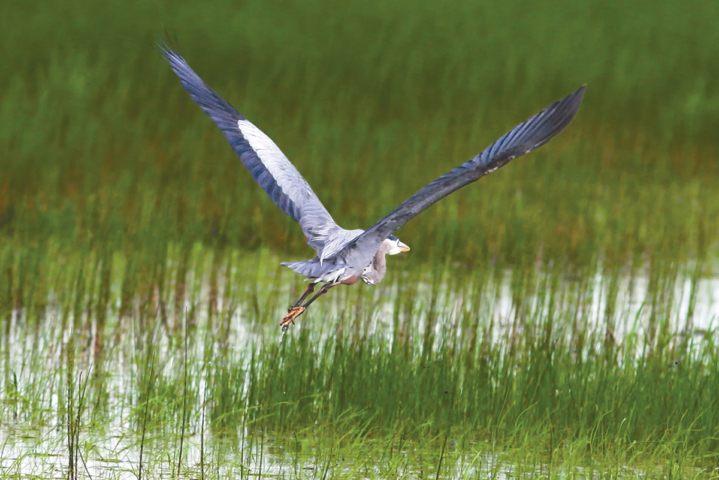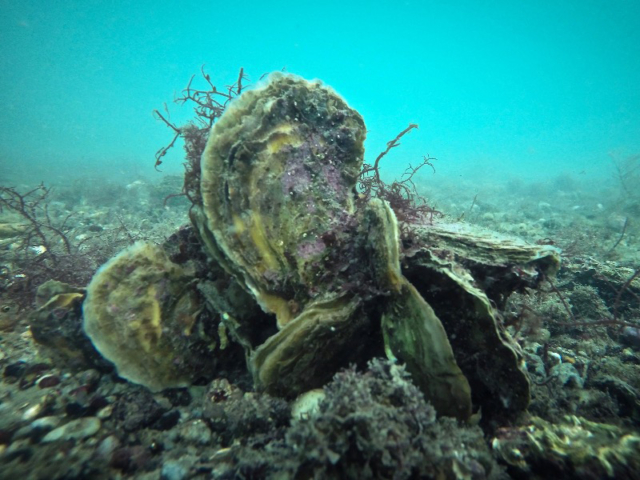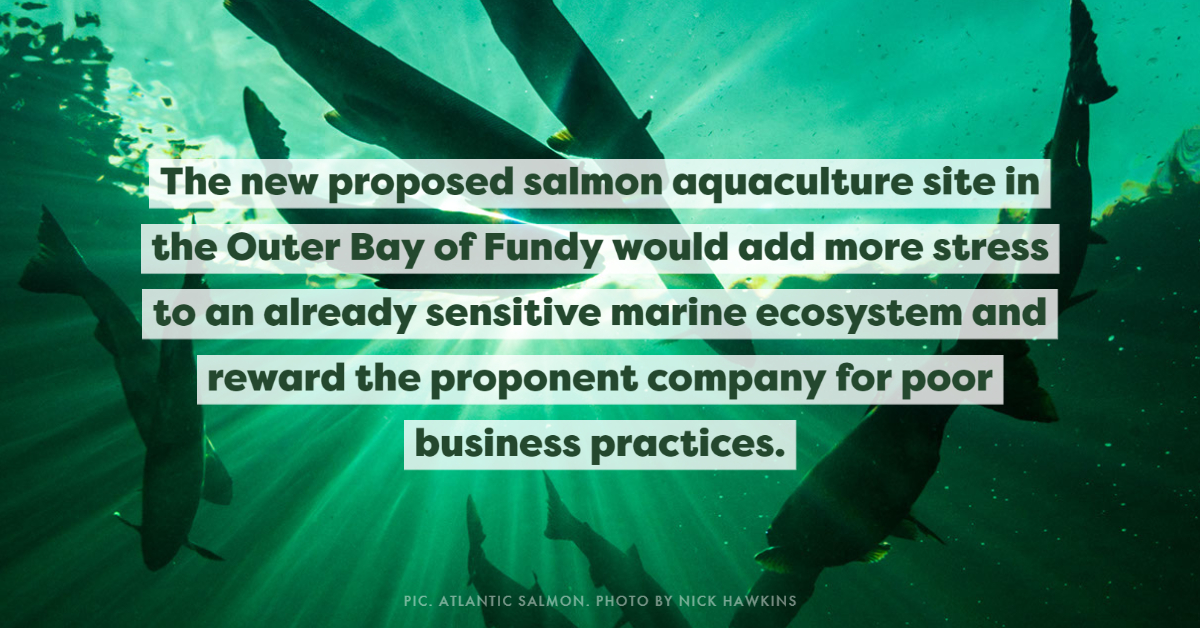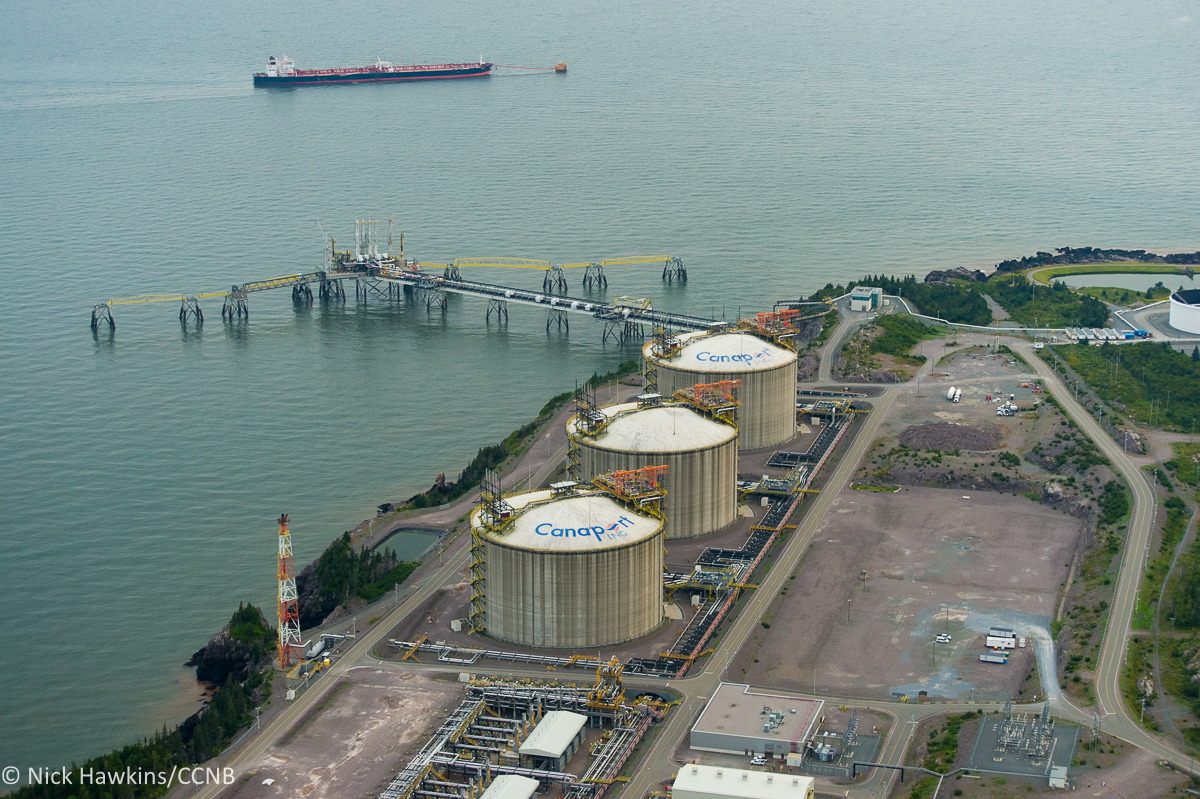An important marine habitat in New Brunswick.
Working to protect these important nursery areas for inshore and offshore fish, shellfish and birds.
The ecological and economic value of salt marshes has long been recognized. Salt marshes, along with eelgrass beds and oyster reefs, are among the most important marine habitats in the world. They are important nursery areas for inshore and offshore fish, shellfish and bird. Salt marshes recycle nutrients for plants and animals, serve to stabilize sediments and reduce erosion, and protect human communities from the effects of storm surges and sea-level rise. They are generally net importers of nutrients during the summer months when the grasses are growing. In winter, they are net exporters.
New Brunswick has 2,269 km of coastline and eight per cent (8%) of the total coastal habitat types (e.g, estuarine flats, saline ponds, dunes, beaches, islands) is salt marsh (Hanson and Calkins 1996).

Saints Rest Marsh, photo by Nick Hawkins
Up to 65 per cent of New Brunswick’s salt marshes have been lost during the past 300 years (Environment Canada 1987; National Wetlands Working Group 1988). Losses were initially due to extensive conversion of salt marsh to agricultural land by building dykes, particularly in the Upper Bay of Fundy region.

Since the early 1990s, the allure of the ocean has spawned a trend of population growth in coastal areas, particularly southeastern New Brunswick. The warm, shallow sandy beaches and close proximity to one of New Brunswick’s fastest growing regions (the Moncton/Dieppe area) and an aggressive provincial tourism marketing program have combined to make New Brunswick’s east and south-east coast one of the most popular tourism destinations in New Brunswick (Milewski and Harvey 2001). The result has been a boom in residential/cottage development, marinas, eco-tourism projects and other human infrastructure along New Brunswick’s east coast.
In 2005, the Conservation Council of New Brunswick conducted a survey of thirty salt marshes along the east coast of New Brunswick between Point Escuminac and Cape Jourimain. The goal of the survey was to identify the type and overall degree of human disturbance for each salt marsh and assess opportunities for their restoration.
Restoring Oysters
Over the past 50 years, natural oyster production in New Brunswick has gone from being a resource that placed the province as a Maritime leader in oyster production to a resource on the verge of disappearing from the estuaries of northern and eastern New Brunswick. Today, hundreds of natural oyster beds and reefs are buried under many metres of sediment and existing beds are threatened with the same fate. Add to this situation the largely unregulated discharge of nutrients from a wide range of sources and the ecology of some bays are poised to shift from being biologically diverse to simple ecosystems dominated by annual seaweeds, jellyfish, bacteria and worms (Milewski and Chapman 2002).
The failure of natural oyster populations to recover from the effects of the Malpeque disease epidemic in the 1950s did not go unnoticed by federal and provincial resource managers. Rather than address the impacts of fishing technology and the by-products of human development on oyster beds, the response of government managers was to shift effort from harvesting oysters on natural beds to farming oysters. In doing so, research effort shifted from examining the restoration, recovery and ecological importance of natural oyster beds or reefs to aquaculture-oriented topics such as oyster-seed supply, new seed-production technology, grow-out techniques, predator and disease control and genetic engineering. This technological approach to addressing resource depletions – shifting from restoring wild stock to aquaculture – now appears to be the major policy tool for addressing species declines.

Policies need to address true costs
Since its beginnings in New Brunswick more than three decades ago, aquaculture has been considered by all levels of government as an economic boon to regions beset by seasonal employment fluctuations and declines in traditional fisheries. Atlantic salmon, striped bass, sturgeon, cod, as well as oysters, are just a few of the species that have experienced population collapses in recent decades and are now the focus of extensive aquaculture research and development.
The true costs of the aquaculture industry (economic, social and ecological) should be considered when developing policies and regulations for the industry. It wasn’t until disease epidemics and conflicts over new sites hit the salmon aquaculture industry in the Bay of Fundy – the New Brunswick’s first foray into intensive and large-scale aquaculture – that environmental standards, management programs, and site allocation policies began to be developed. (Milewski et al., 1997).
The cornerstone of the site allocation policy for the Bay of Fundy was bay management plans. The policy, developed 15 years after the industry took off, was supposed to make the industry sustainable. Bay management plans were supposed to address disease problems, improve environmental stewardship and improve production efficiencies in order to stabilize the industry financially. The salmon aquaculture industry remains dogged by disease problems, conflicts over new sites continue, low market prices and increased global competition. And, the salmon aquaculture industry in New Brunswick is now almost completely controlled by one company, Cooke Aquaculture.
The salmon aquaculture industry depends heavily on significant public concessions for its survival. These concessions are financial as well as ecological. More and more of New Brunswick’s coastal zone and public trust resources – fishing grounds, fish habitat, water quality and biodiversity – have been handed over to the aquaculture industry for its use (Harvey and Milewski 2008).
Restoration not substitution
Despite considerable efforts to replace or substitute wild species with their farmed counterpart, the wild populations of decimated species, like salmon and oysters, continue to decline and the ecological implications of their decline remains largely unexamined.
Every species has a complex ecological role to play in the ecosystem. Its role cannot be replicated or mimicked by a technological fix such as aquaculture. Oysters and the habitat they create have a structural and functional role in the ecosystem that is more important than their abundance alone suggests. The permanent habitat created by oysters has ecological value for an astonishing range of epibenthic and bottom-dwelling species in an environment that, without oysters, appears largely unstructured and much depleted.
Given the key functions oysters play in the health of estuaries and the fact that all estuaries show a loss of production of many commercial and non-commercial fish species, as well as oysters, a major oyster restoration effort for all estuaries is warranted. Restoration work, however, must be coupled with a concerted effort to ensure that regulations and legislation are in place to protect oyster habitat from land-based sources of pollution and coastal development. Oysters are more than a harvestable resource. Restoring oyster beds and estuaries will create benefits that will cascade throughout the entire ecosystem.




